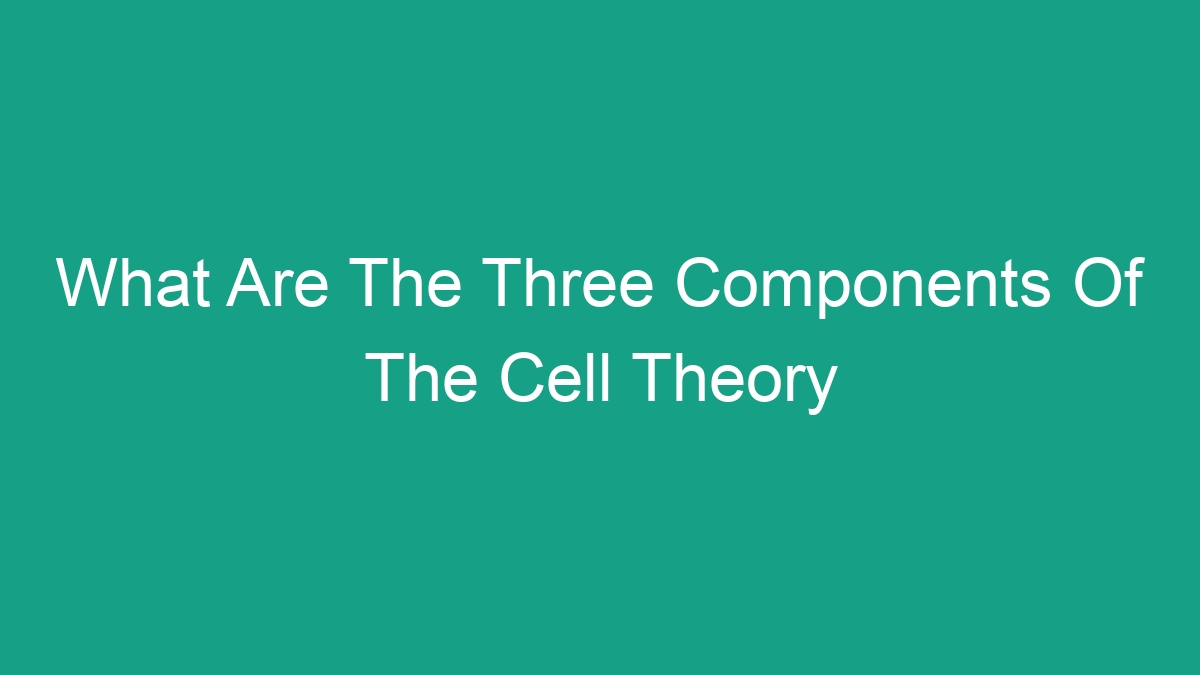
The cell theory is a fundamental concept in biology that describes the properties of cells, the basic structural and functional units of all living organisms. The theory has three main components that provide the foundation for our understanding of life at a cellular level. In this article, we will explore each of these components in detail and discuss their importance in the field of biology.
1. All living organisms are composed of one or more cells
All living organisms are composed of one or more cells, which is the first component of the cell theory. This means that whether an organism is a single-celled organism, such as a bacterium or a protist, or a multicellular organism, such as a plant, animal, or human, it is made up of cells. The discovery of this fundamental principle is attributed to the work of scientists such as Robert Hooke, who first observed and named cells when he looked at a thin slice of cork through a microscope in 1665.
Cells are the basic building blocks of life, and they carry out all the necessary functions to support the life of an organism. They provide structure and support, carry out metabolism, and contain genetic material that is passed from generation to generation. The existence of cells in all living organisms is a key characteristic that unites the diversity of life on Earth.
2. The cell is the basic unit of structure and organization in organisms
The cell is the basic unit of structure and organization in organisms, which is the second component of the cell theory. This principle emphasizes the importance of cells as the fundamental units that make up the structure of all living organisms. Cells are also responsible for organizing and coordinating the activities of an organism, as they carry out specialized functions that contribute to the overall functioning of the organism.
Cells have a variety of structures and organelles that enable them to perform specific functions, such as the mitochondria for energy production, the nucleus for genetic information storage, and the cell membrane for regulating the passage of materials into and out of the cell. These structures work together to provide the necessary organization and coordination for the organism to function as a whole.
This component of the cell theory highlights the hierarchical nature of biological organization, where cells make up tissues, tissues make up organs, organs make up organ systems, and organ systems make up an organism. Understanding the cell as the fundamental unit of organization is essential for comprehending the complexity of biological systems and their functions.
3. All cells come from pre-existing cells
All cells come from pre-existing cells, which is the third component of the cell theory. This principle emphasizes the continuity of life through the process of cell division and the replication of genetic material. It was first proposed by German scientist Rudolf Virchow in 1855, who stated that “where a cell exists, there must have been a pre-existing cell, just as the animal arises only from an animal and the plant only from a plant”.
This component of the cell theory contradicts the concept of spontaneous generation, which was a popular belief in the past that living organisms could arise from non-living matter. Instead, it supports the idea that cells arise from pre-existing cells through the process of cell division, where a parent cell gives rise to two daughter cells that are genetically identical to the parent cell.
The process of cell division is essential for growth, development, and the repair of tissues in multicellular organisms. It also plays a crucial role in the transmission of genetic information from one generation to the next, ensuring the continuity of life. Understanding the origin of cells from pre-existing cells is a fundamental concept in biology and has important implications for fields such as medicine and biotechnology.
Conclusion
In conclusion, the cell theory is a foundational concept in biology that consists of three main components: all living organisms are composed of one or more cells, the cell is the basic unit of structure and organization in organisms, and all cells come from pre-existing cells. These components provide a framework for our understanding of life at a cellular level and have significant implications for various fields of science. By recognizing the importance of these components, we can further our understanding of the principles that govern the functioning and organization of living organisms.
FAQs
Q: Who first proposed the cell theory?
A: The cell theory was first proposed by Matthias Schleiden and Theodor Schwann in the 1830s, with the contribution of Rudolf Virchow in the 1850s.
Q: Why is the cell theory important?
A: The cell theory is important because it provides a framework for understanding the fundamental properties of cells and their role in the structure and function of living organisms.
Q: How do the components of the cell theory relate to each other?
A: The components of the cell theory are interconnected, as they describe the properties and functions of cells in living organisms. Together, they provide a comprehensive understanding of the role of cells in the organization and continuity of life.



